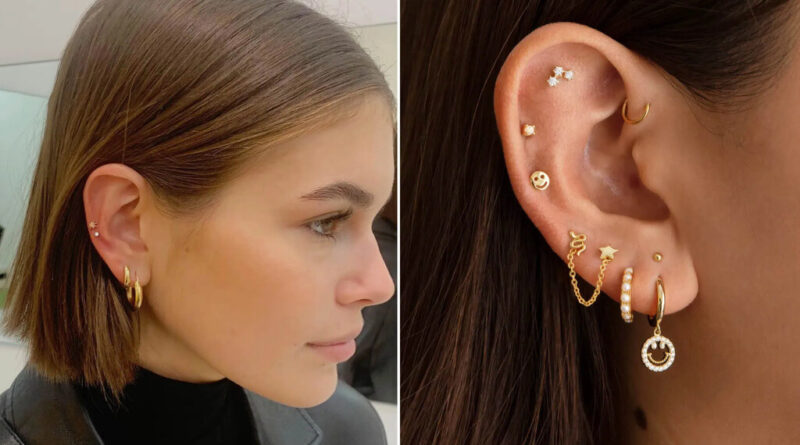Types of Ear Piercings: How to Choose the Right One for Your Face Shape In 2023
As an adult, the best thing is the freedom to get a new addition whenever we desire. Walking into a piercing studio gives us the same thrill we felt at 13 when we were finally permitted to get a second or third piercing after months of begging. Exploring different types of ear piercings can always bring back the excitement.
Although ear-piercing placements have been around for a long time, the approach to curating your ear has significantly transformed. These days, professionals provide personalised services to analyse the anatomy of your ears and recommend a customised configuration that will suit you the most.
With this method, you can now walk out of a piercing studio with an entire collection of jewellery featuring new and old piercings that have been beautifully revamped to create a constellation of ear adornments. It’s amazing how much the ear curation process has evolved; we’re here for it!
If you’re interested in getting new ear piercings, we’ve got you covered with a comprehensive list of all the various types of ear piercings available. Whether you’re considering getting a classic lobe piercing or something more daring like a tragus or conch piercing, this guide will provide you with all the information you need to make an informed decision.
Table of Contents
Factors to Consider Before Getting ear piercings:
Before deciding on a type of ear piercing, it’s important to consider whether you should get one. Making an informed decision is crucial, so here are some factors to consider:
Age:
Although there is no specific age requirement for ear piercing, waiting until a child is at least six months old is generally recommended because their earlobes are still developing. Some piercers may also have age restrictions, so checking with the piercing studio beforehand is best.
Health:
Personal health is an important factor to consider before getting any piercing. If you have any medical conditions or are taking any medications, it’s recommended to consult a doctor beforehand. People with allergies, especially to metal, may need hypoallergenic jewellery to avoid allergic reactions.
Cost:
Ear piercings can be relatively affordable, usually under £100, but the cost can add up when purchasing jewellery.
Pain factor:
Different areas of the ear have different pain levels when getting pierced. While the initial sharp pain is usually brief, it’s important to consider your pain tolerance and needle sensitivity.
Commitment:
Ear piercings require maintenance, and cleaning the piercing site regularly is important to prevent infections. If you’re not ready to continue the aftercare routine, consider piercing your ears.
Lifestyle:
Your day-to-day activities may affect your decision to get your ears pierced. Sports or physical activities may require the temporary removal of earrings, which can affect the healing process. Additionally, some workplaces may have policies against wearing ear piercings, so they may have to be removed before work.
External factors and personal preference:
It’s also important to consider external factors such as school, guardians, or job restrictions on piercings. Ultimately, getting your ears pierced should be based on personal preference, as long as you’re a consenting adult and understand the risks and aftercare requirements.
Different Types of ear piercings:
Lobe Ear Piercings
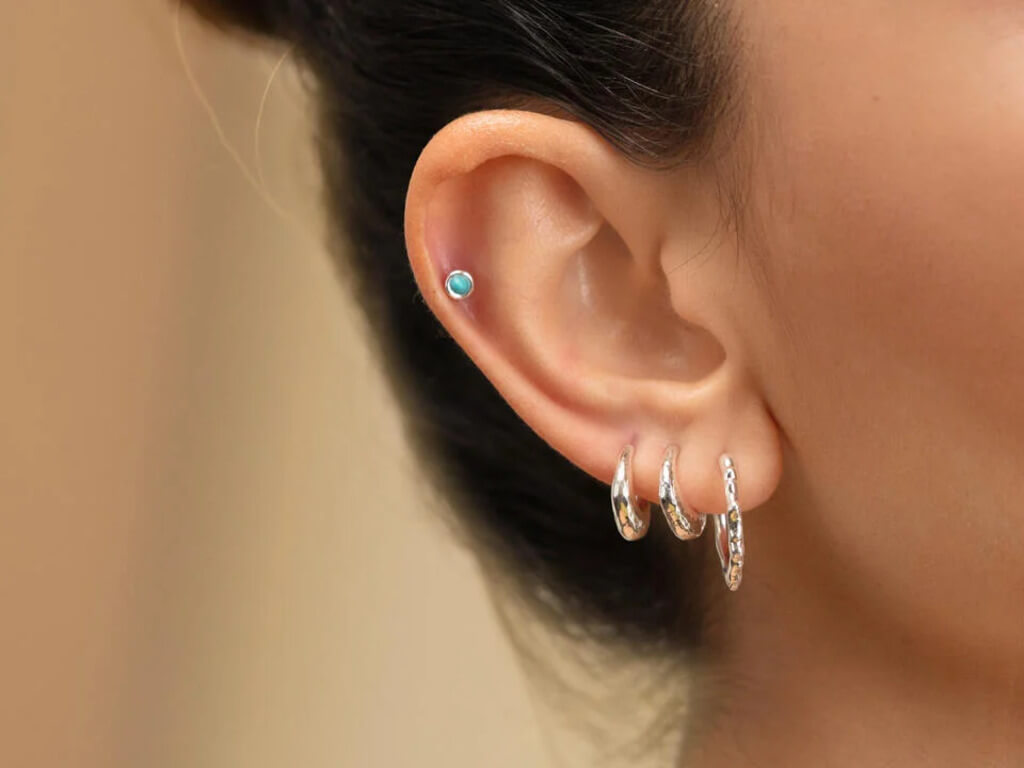
Regarding ear piercings, lobe piercing is undoubtedly the most popular choice. It’s easy to wear and one of the least painful piercing options. Most kids and teens opt for this types of ear piercings due to its simplicity, and it’s a great starter piercing if you’re new to this world. Lobe piercing causes less discomfort as the earlobe is less sensitive than other types of piercings. Studs and rings look great on the earlobe, making it a versatile option to adorn your ears.
We recommend beginning with one or two studs if you’re starting with ear piercings. You can also opt for earrings instead if that’s more your style. These earrings are quite common, but they look great regardless. Starting with a lobe piercing will also help you get used to the sensation of pain that comes with getting your ears pierced. This gradual process of easing your way into more painful ear piercings may help if you plan to get other piercings.
Snakebite Ear Piercing
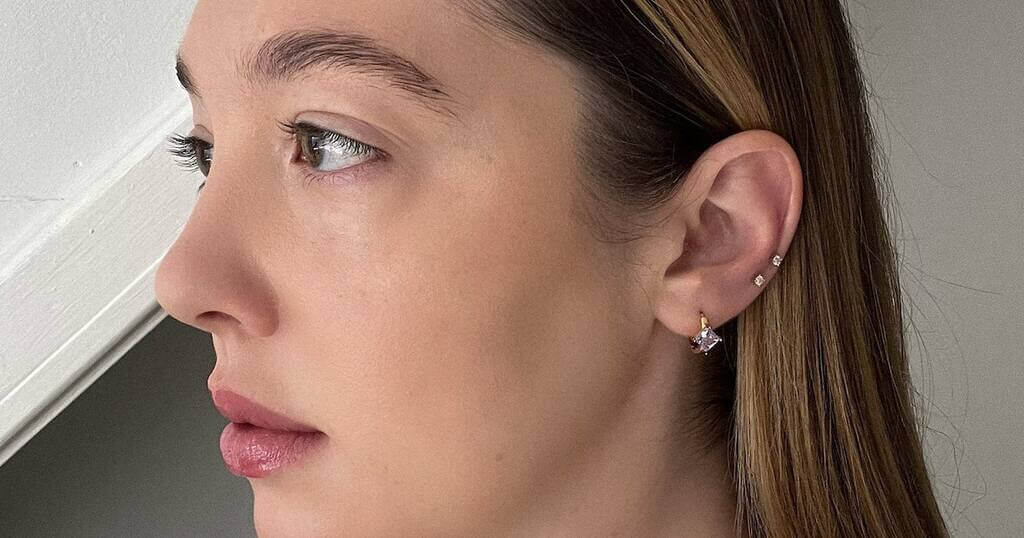
The snakebite style, made popular by models such as Kaia Gerber, features two closely stacked piercings on the earlobe. The placement of these piercings can vary, affecting the healing time and potential swelling. Due to the proximity of the piercings, a bump is often more pronounced.
Snug Ear Piercing
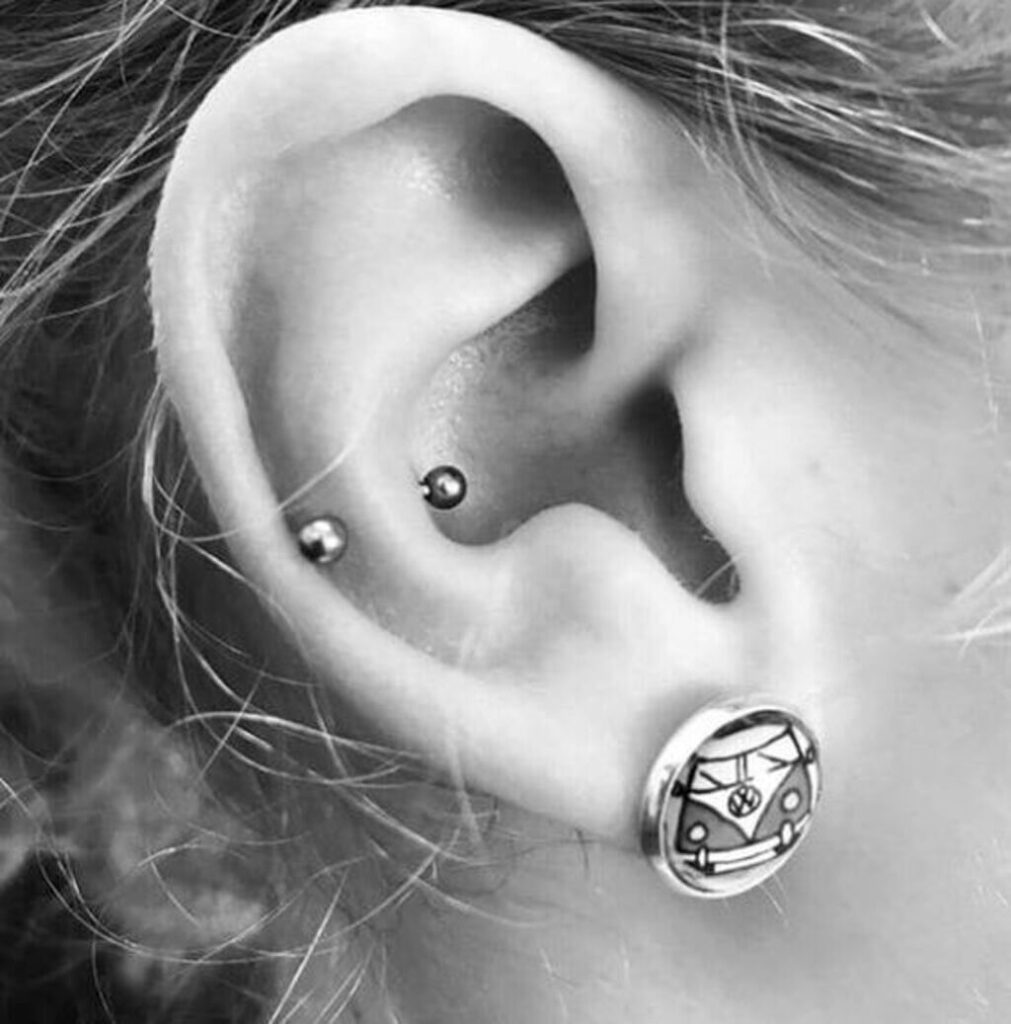
Despite its adorable name, the snug piercing is notorious for being one of the most excruciating ear piercings one can get. It is situated above the anti-tragus or the inner cartilage ridge and has the distinguishing feature of being visibly noticeable where the piercing enters and exits the ear. Before getting a snug piercing, it is recommended to consult your piercer as not everyone’s ear can safely accommodate it, similar to the rook piercing.
Conch Ear Piercing

Conch piercings can vary based on the specific location you intend to pierce. Two distinct conches are present in the ear – one between the helix and antihelix, while the other is between the antihelix and the ear canal. Both conch piercings typically cost the same and are equally painful, if not slightly less, than a snug or rook piercing.
Helix Ear Piercing
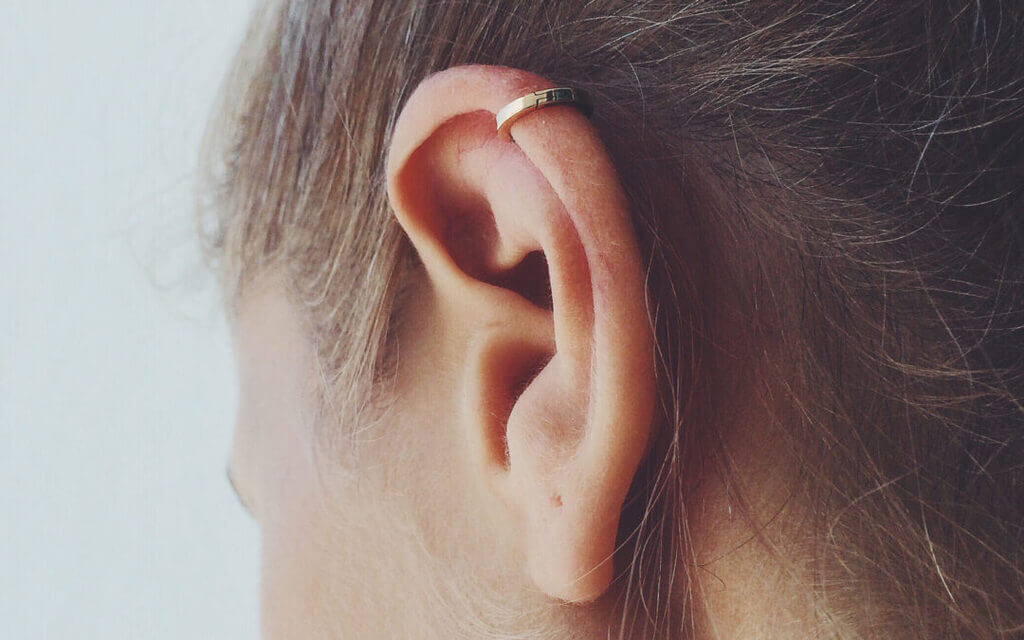
Helix piercings can be placed anywhere along the outer edge of the ear, also known as the helix. Due to the helix’s extensive ear coverage, any piercing above the earlobe or outside the tragus can be categorised as a helix piercing.
Forward Helix Ear Piercing
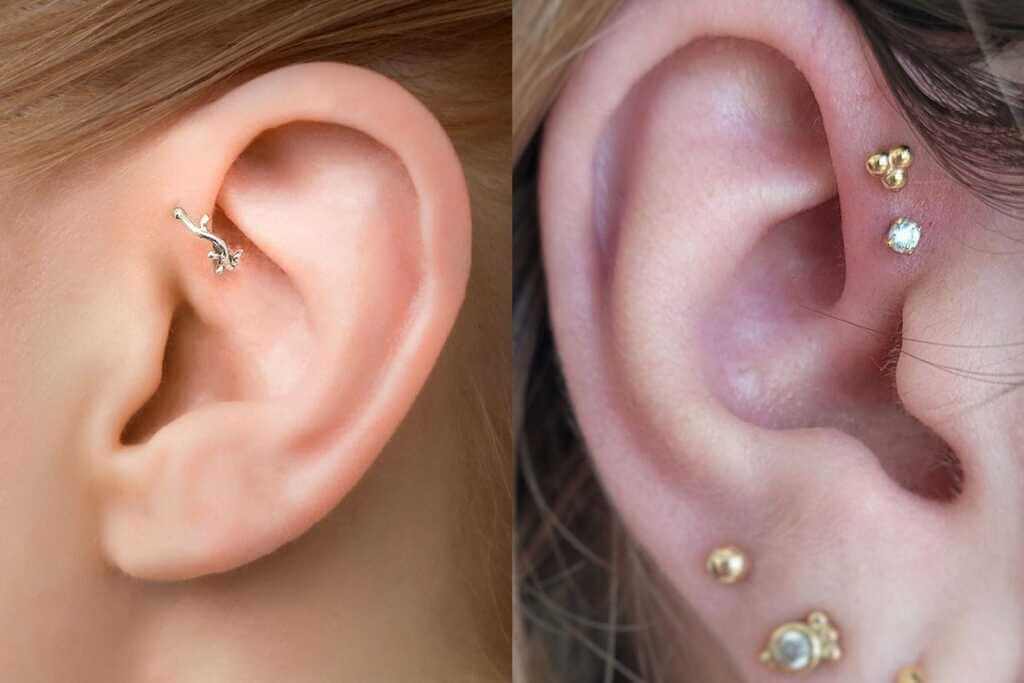
Forward helix piercings are a particular type of helix piercing located just above the tragus. Although they are situated on the ear’s outer rim, they are still classified as helix piercings. Additionally, it is possible to have multiple piercings in this area, resulting in double or triple forward helix piercings.
Tragus Ear Piercing
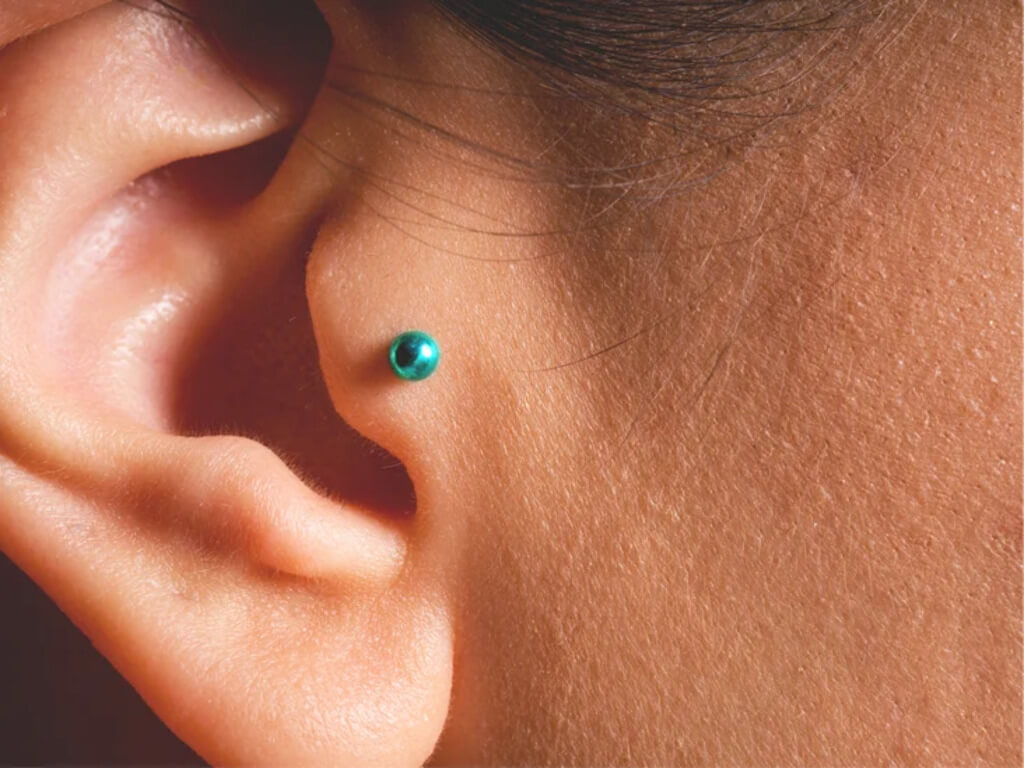
The tragus piercing, pronounced as “tray-gus”, is often described as a relatively painless piercing that causes only a pinch or a feeling of pressure on the area. However, it can be quite challenging to heal as it passes through the dense cartilage in front of the ear canal, which is part of the ear that presses against the side of your face. The earring’s tricky placement makes it difficult to avoid knocking it accidentally when inserting earbuds or holding your phone up to that ear. Nonetheless, despite the healing challenges, tragus piercings look remarkably cool.
Orbital Ear Piercing
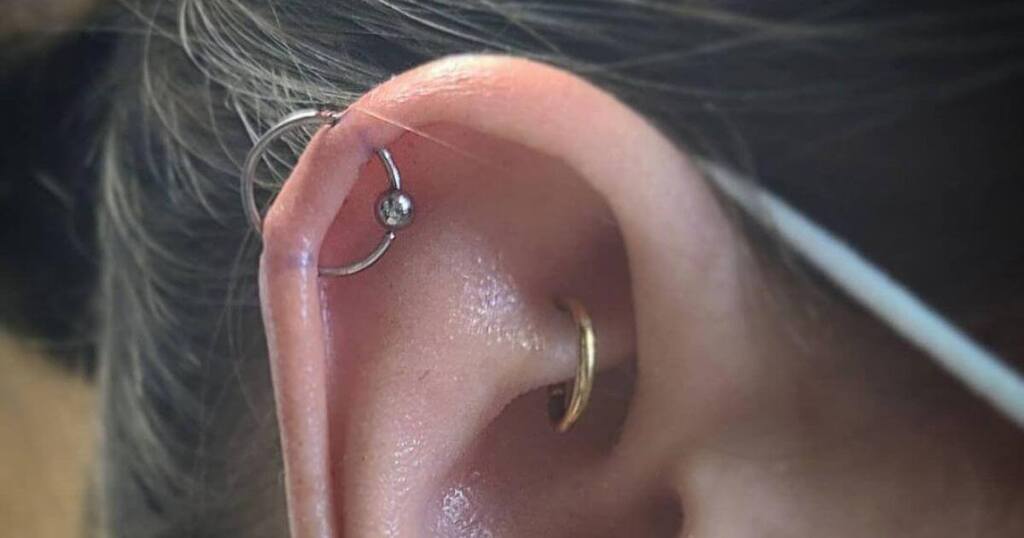
An orbital piercing is a types of piercings that encircle a specific area of the ear, as the name implies. This piercing involves creating two holes in the same location and threading an earring through both. Typically, the outer ear and helix are the most popular locations for orbital piercings.
Cartilage Ear Piercing
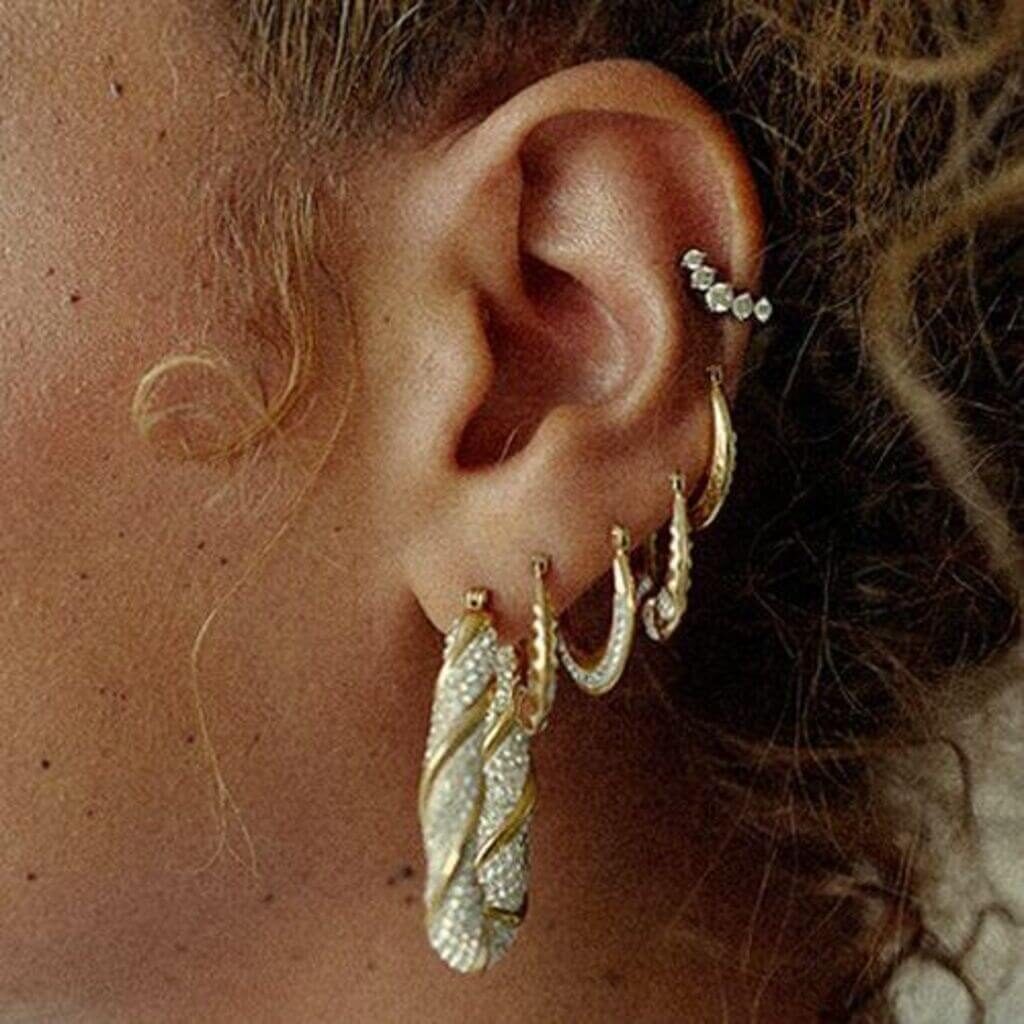
Cartilage piercings are a types of piercings that involve piercing through the firm, flexible tissue that provides structure to your ear, known as cartilage. Except for the earlobe, nearly all parts of the ear are composed of cartilage. Cartilage piercings are typically more challenging to pierce than earlobe piercings and are more sensitive to pain, causing more discomfort during the piercing process.
Daith Ear Piercing
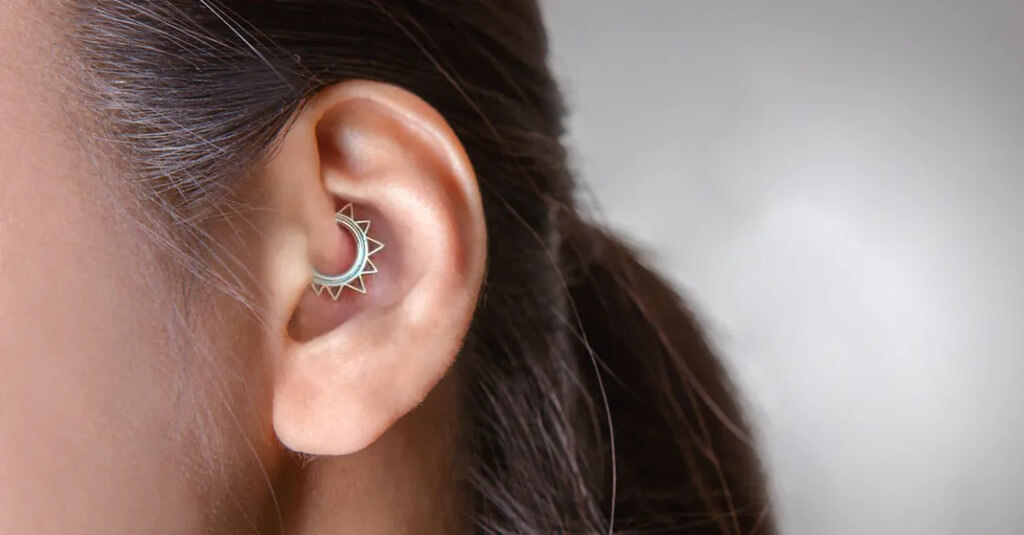
The Daith piercing is located close to the ear canal and is positioned just above it, connected to the innermost part of the ear. It also lies adjacent to the end of the ear’s helix. Daith piercings can be adorned with rings or barbells; when paired with tragus piercings, they create an attractive combination. By combining these two ear piercings, you can add some flair to your inner ear.
Rook Ear Piercing
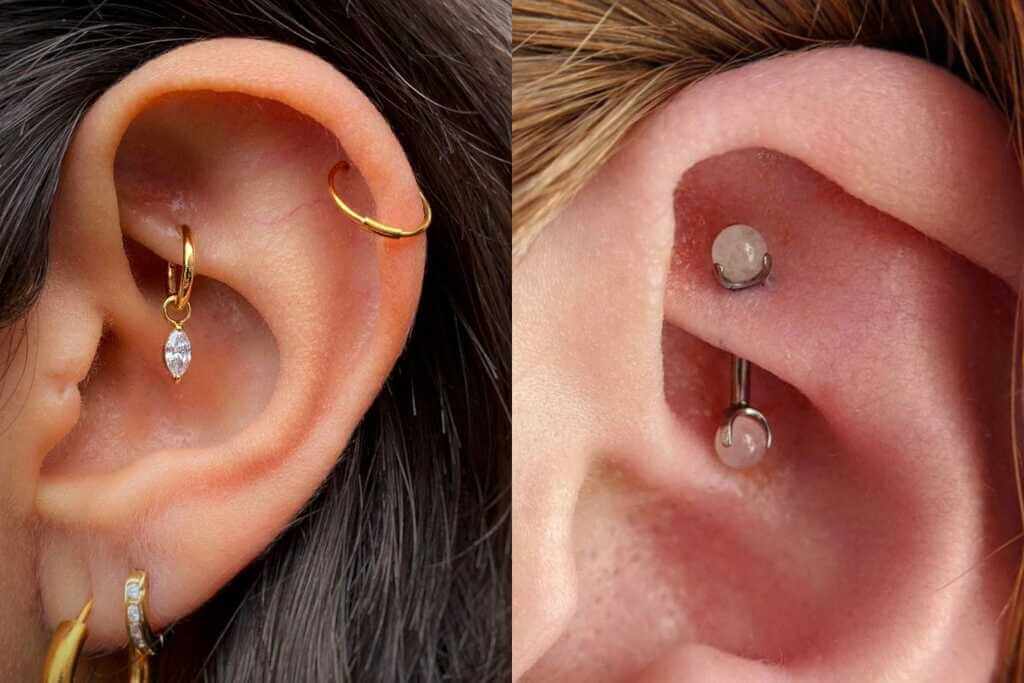
The rook piercing gets its name from its vertical placement that closely resembles the position of a rook chess piece. This similarity is particularly noticeable when using a barbell-shaped piercing. The rook piercing is situated on the same cartilage fold where you can find the snug piercing. This fold is called the antihelix, and it sits beside the helix.
Also Read: Who Is Danette Jackson? Know About Her Long-Lasting Marriage To Jon B
What are the most painful ear piercings, in terms of discomfort or distress?
It’s important to note that pain is a subjective experience and can differ from person to person. However, the snug piercing is often mentioned when ranking the most painful ear piercing. Despite its innocuous name, the snug piercing can take up to a year to fully heal and is known to cause swelling and irritation.
|
Types |
Intensity of pain |
Duration of healing |
|
Lobe Ear Piercings |
Low |
2-3 Months |
|
Snakebite Ear Piercings |
Medium |
2-3 Months |
|
Snug Ear Piercings |
High |
4-6 Months |
|
Conch Ear Piercings |
Medium to High |
6-9 Months |
|
Helix Ear Piercings |
Low |
6-12 Months |
|
Forward Helix |
Medium |
3-9 Months |
|
Tragus Ear Piercings |
Medium |
6-9 Months |
|
Orbital Ear Piercings |
Low |
2-2.5 Months |
|
Cartilage Ear Piercings |
Medium |
3-6 Months |
|
Daith Ear Piercings |
Medium to High |
3-9 Months |
|
Rook Ear Piercings |
High |
6-12 Months |
FAQ’s
-
When is it safe to change my ear piercing?
You should wait 6 to 8 weeks before changing your ear piercing to allow enough time to heal properly.
-
How should I clean my ear piercing?
Regularly clean your piercing with soap and water to prevent infection and promote healing.
-
Is it possible to get an infection from a piercing?
Yes, there is a risk of infection with any piercing. It’s important to care for the pierced area to minimise this risk properly.
-
How can I tell if my piercing is infected?
An infected piercing may become swollen, red, and painful. You may also notice discharge or a foul odour coming from the piercing.
-
How should I treat an infected ear piercing?
If you suspect your piercing is infected, clean it twice daily with sterile saline or mild soap and water. Apply antibiotic ointment as directed by your piercer or doctor.
-
What should I avoid before getting a piercing?
It’s generally recommended to avoid consuming caffeine or energy drinks before getting a piercing, as these can increase your pain sensitivity.
-
Can I take painkillers to manage piercing pain?
It’s best to consult with your piercer and doctor to determine the safest and most effective pain management strategy for you.
Conclusion:
That concludes our guide on the trendiest types of ear piercings styles for 2023. Ear piercing is a growing trend in 2023, so plenty of options exist to enhance your style. You can select one of the piercing styles we’ve mentioned or get creative and add your unique twist.
For a More Amazing Guide, Keep Browsing The Organic Vibes.

